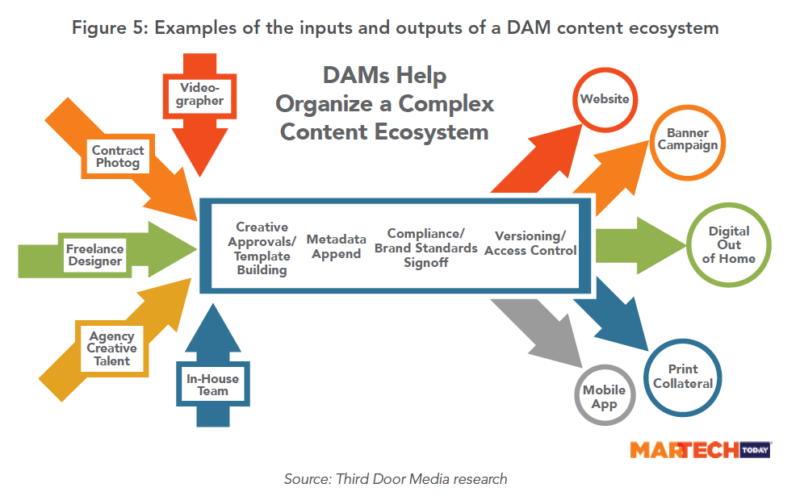What’s Digital Asset Management and why are marketers adopting the technology?
The dramatic growth of both media assets and devices is fueling an interest in systems to organize digital assets.
Digital Asset Management platforms, often called DAMs, are software programs that store, organize and enable the more efficient use of an organization’s entire library of digital assets. A DAM is the “single source of truth” where marketers can find every relevant version of the media assets that have been created for the brand — images, PDFs, photographs, audio, video and even virtual reality or other cutting-edge formats.
This phenomenon is driving brands to shift to a customer-centric marketing model that requires personalized content to be delivered to a wide variety of customer touchpoints –– an approach that is more easily implemented with Digital Asset Management technology.
DAMs also help plug leaks like the duplication of effort in media creation, the time wasted searching for creative assets and the inevitable miscommunications between geographically diverse teams that are collaborating virtually. Additionally, these systems can help eliminate costly errors in compliance with brand standards and rights management.
Bottom-line-minded CMOs also appreciate that the analytics capabilities in many DAM systems allow them to track the usage –– and therefore the ROI –– of creative assets, allowing for future optimization and further efficiencies.
What’s driving the growth of Digital Asset Management?
Despite the apparent slowdown in marketing technology investment last year –– Gartner’s latest CMO survey report pegged martech spending to account for only 26% of the overall marketing budget in 2019, as compared to 29% in 2018 –– Digital Asset Management (DAM) is still expected to grow.
Why? Because today’s consumers and business decision-makers expect content from brands to be relevant and personalized to them, regardless of where they encounter it. Of the 1,000 respondents to the Adobe Consumer Content Survey in December of 2018, more than half said they’re more likely to make a purchase (51%) or become loyal to a brand (49%) if the brand’s content is personalized. Thirty-four percent even said personalized content would spur them to make an unplanned purchase.
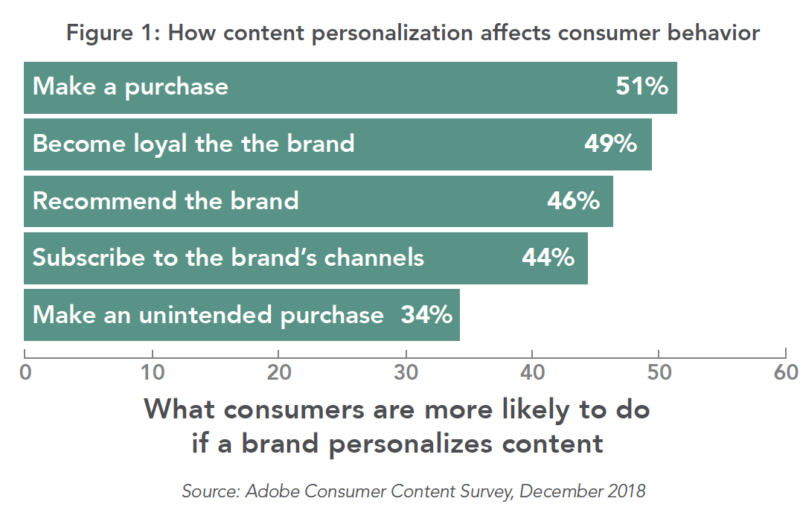
What does this growth look like?
Forrester Research in 2019 predicted that the DAM market would climb to $1 billion that year, saying that three-quarters of global software decision-makers were looking to “speed creation, optimize storage, and enhance delivery of their marketing and brand content.” ResearchandMarkets believes DAM software will grow to account for $6.9 billion in spending by 2024, which represents a 34.7% compounded annual growth rate from 2019 to 2024.
Gartner’s 2019-2020 CMO Spend Survey found that CMOs expected that the creation and management of content and campaigns would command the second-largest portion of the marketing budget. Additionally, the survey indicates that CMOs consider content creation and management to be the fifth most vital capability for supporting the delivery of their marketing strategy over the next 18 months.
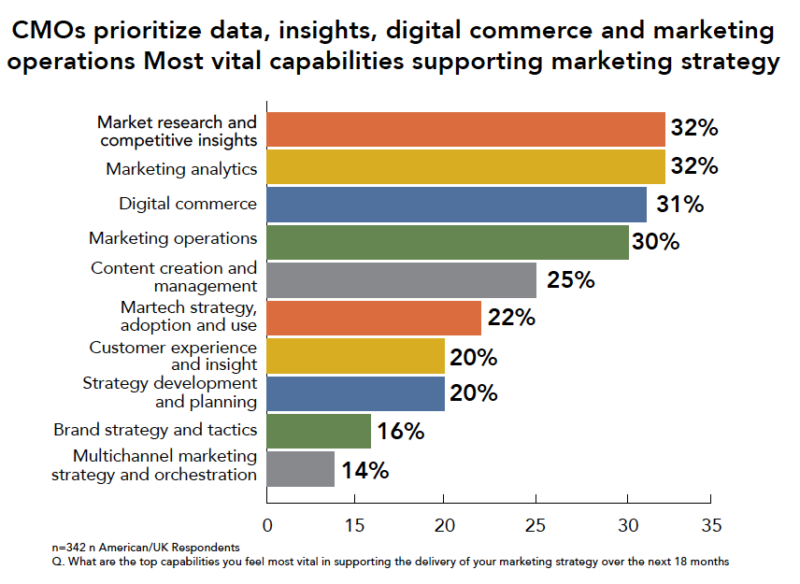
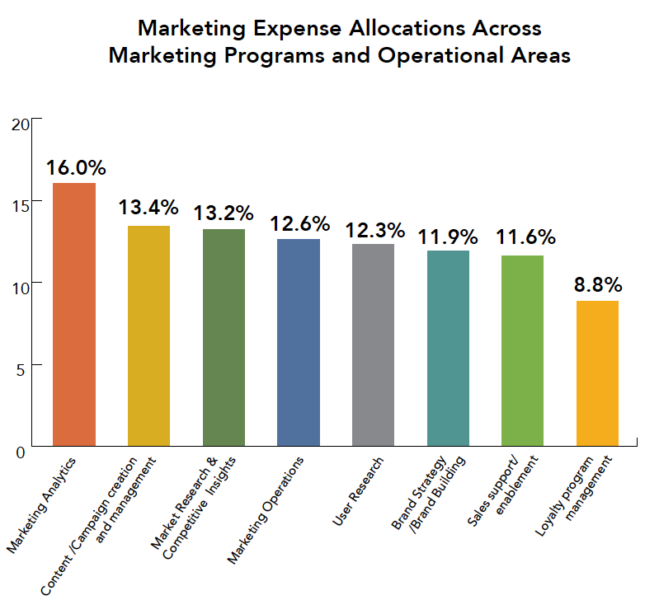
The further benefit of a DAM is that these assets are appended with metadata that can provide information on anything the marketer might want to know before using the asset, such as whether the company owns the perpetual rights to use a photograph (and in what markets), whether the legal team has approved a video, and that an infographic or whitepaper has been checked to ensure it complies with the brand’s design standards.
Before the blossoming of software-as-a-service (SaaS), DAMs were installed software that resided on a company’s servers. But their utility has grown exponentially — especially for global and distributed organizations — now that most DAMs are cloud-based offerings.
Tellingly, much of this adoption isn’t new, but rather represents brands upgrading or changing their current technological systems. Unlike many other types of martech, DAM is a fairly well- established category –– one of the players we profiled in our Martech Intelligence Report, Widen, was founded in 1948, while others sprung up in the 1980s or 1990s.
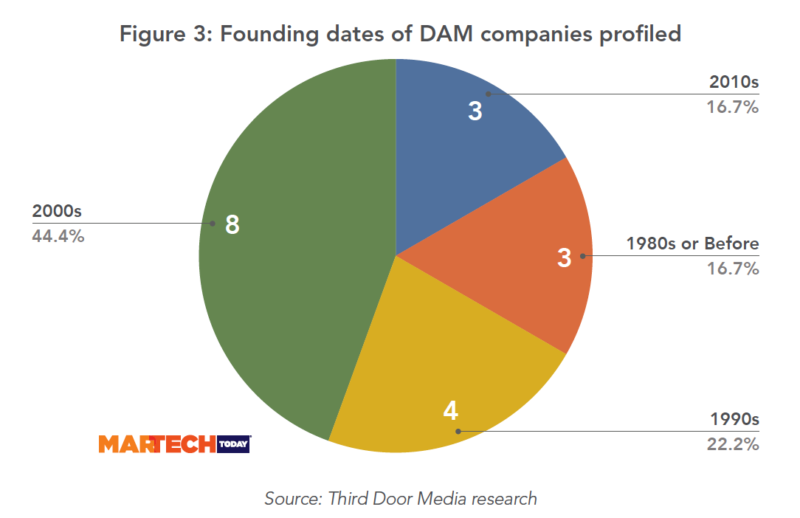
Gartner’s 2018 marketing technology survey found that 79% of marketers had either fully deployed or were in the process of deploying a DAM solution. Another 12% said they planned to deploy a DAM within the next two years. Only 10% of respondents (3% of whom said they “don’t know”) didn’t indicate they planned to use digital asset management.
More touchpoints/devices and more content drive a greater need for DAM benefits
What has changed about the environment is that the problems that DAMs are designed to handle have grown in importance as both consumers and business decision-makers engage with marketing content in a wide variety of environments and using multiple digital devices. Online members of Gen Y –– the highly-coveted demographic of people between the ages of 29 and 37 –– use more than four connected devices on average, according to a May 2018 Forrester Research report called “Omnichannel Strategies Demand a New Content Approach.”
And even media thought of as “traditional,” or as something other than media, are calling for the efficient delivery of digital assets, as the $300 million acquisition of Dynamic Yield by McDonald’s proves. The QSR giant is using the technology to dynamically personalize its digital drive-through menus, and it will eventually expand this approach to its self-service ordering kiosks and its mobile app.

Adoption of DAMs is also driven by the acknowledgment that managing digital media – especially when assets encompass everything from PDFs to vector graphics to VR experiences to podcasts – is a very complex undertaking where there are many opportunities for things to go wrong and result in a waste of resources.
Another factor working in DAMs’ favor is the growing accessibility of artificial intelligence (AI) and machine learning (ML). Though DAMs offer a great deal of utility, the manual nature of categorizing assets – adding descriptions, tags, etc. to enable users to later find the assets as needed – represents a big hurdle to the successful employment of this technology.
Recently, however, API-accessible content recognition systems (from Amazon, Clarifai, Google, Imagga or Microsoft) have become widely available and DAM vendors have built the capabilities into their platforms – enabling users to automatically analyze and append information to assets (known as metadata) without the huge investment of employee time that was once required.
On its website, Imagga touts the benefits its technology brings to IntelligenceBank’s DAM, saying: “The keyword auto-tagging feature thus removed an important barrier of entry for companies introducing IntelligenceBank DAM into their business process.”
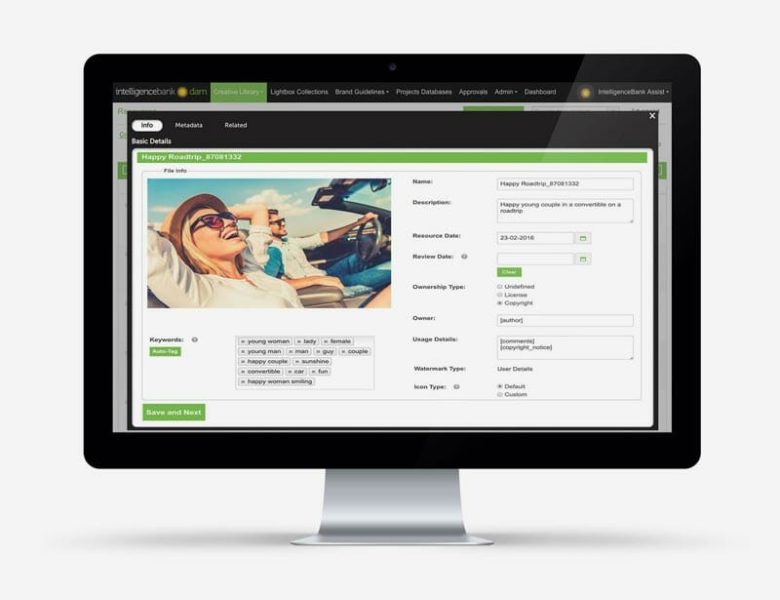
The sophistication and ease of use of these capabilities are a significant differentiating factor, especially given the varying needs of brand marketers in different categories. For example, for an automotive manufacturer, there’s substantial value in artificial intelligence that can learn to recognize that an image contains not just a “car” but, in fact, shows a sedan of a particular model and year. Notably, Adobe has chosen to use its proprietary Sensei artificial intelligence, for appending metadata which it considers to be a competitive advantage in achieving this level of specificity.
Get the full report: Enterprise Digital Asset Management Platforms: A Marketer’s Guide. Includes in-depth profiles of 18 different vendors.
Related stories
